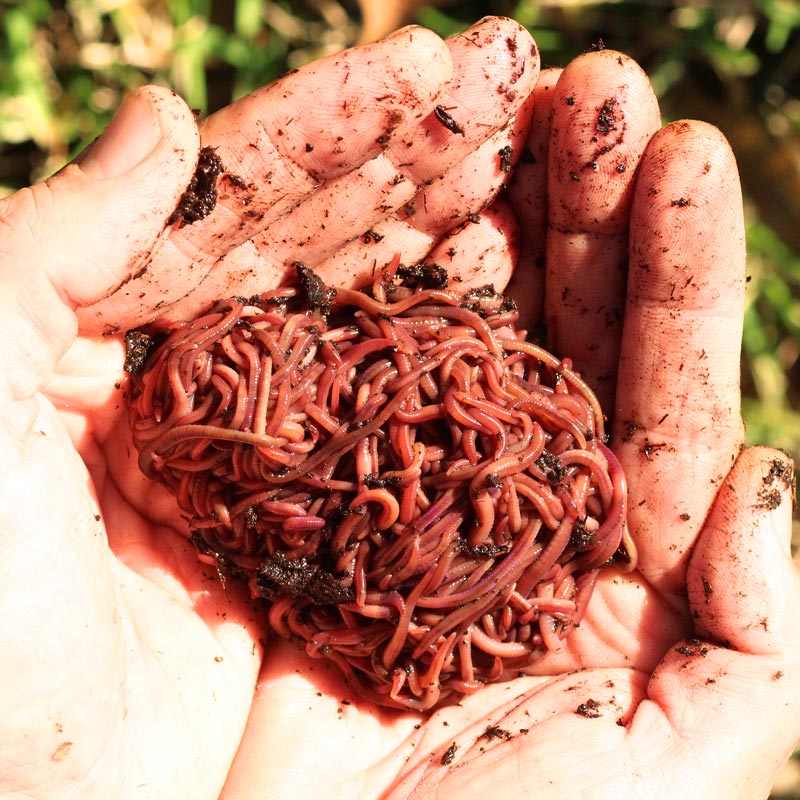Red Wiggler Worms Demystified: Opening the Keys of Vermiculture for Greener Living and Nutrient-Rich Soil
In the realm of lasting practices for enhancing soil high quality and advertising eco-conscious living, red wiggler worms play an essential yet frequently forgotten role. Red Wiggler Worms. Recognizing the complexities of caring for these worms, maximizing their atmosphere, and harnessing their spreadings can lead to a greener way of life and healthier soil for plants to thrive.
The Role of Red Wiggler Worms
Red Wiggler worms play a vital role in composting systems by effectively damaging down organic matter right into nutrient-rich castings. These starved eaters eat a range of organic products, such as cooking area scraps, backyard waste, and paper products. As they feed, the worms' digestion processes damage down the raw material into a penalty, dark, and nutrient-dense material referred to as worm spreadings or vermicompost.
The spreadings produced by Red Wiggler worms are extremely helpful for dirt wellness and plant development. They are rich in vital nutrients like phosphorus, potassium, and nitrogen, which are essential for supporting healthy plant advancement. Furthermore, worm castings contain advantageous microbes and enzymes that aid enhance soil framework, increase water retention, and improve nutrient uptake by plants.
Benefits of Vermicomposting

It improves soil framework, enhances soil aeration, and boosts dirt moisture retention. Vermicompost likewise enhances the dirt with crucial nutrients like nitrogen, phosphorus, and potassium, promoting plant development and total dirt fertility.
In addition, vermicomposting assistances sustainable gardening techniques by giving a chemical-free and all-natural option to artificial plant foods. Red Wiggler Worms. This eco-friendly strategy not only enriches the dirt however also aids lower reliance on unsafe chemicals, promoting a greener and more sustainable way of horticulture
Establishing Up a Worm Container
When establishing a worm container for vermicomposting, correct configuration is crucial to ensure the success of the composting procedure. The initial step in setting up a worm bin is picking an ideal container.
After adding the bed linens, present the red wiggler worms to the container. It is recommended to start with a small number of worms and gradually raise as they multiply. The worms should after that be supplied with food scraps such as vegetables and fruit peels, coffee grounds, and eggshells. It is important to prevent adding meat, dairy, more info here oily, or salty foods to avoid drawing in insects and producing undesirable smells.
On a regular basis check the wetness levels and temperature in the worm bin to make certain optimum problems for the worms. With appropriate setup and upkeep, the worm container will properly convert organic waste right into nutrient-rich garden compost for your plants and yard.
Gathering Worm Spreadings
To effectively collect nutrient-rich worm spreadings from your vermicomposting system, an organized harvesting method is vital. When it comes time to gather the worm spreadings, there are a couple of essential steps to comply with to make certain an effective process.

Troubleshooting Common Issues
Identifying and attending to common challenges that may emerge throughout the vermicomposting procedure is critical for keeping a healthy and balanced and effective worm container. One common issue that vermicomposters experience is overfeeding. Including excess food scraps can cause an accumulation of moisture and acidity in the worm container, potentially harming the worms. To stop this, feed the worms in small amounts, making sure that the food scraps are adequately damaged down prior to adding more. my latest blog post An additional problem is unpleasant smells rising from the worm bin. Foul smells suggest anaerobic conditions, usually triggered by overwatering or poor air flow. To remedy this, adjust the dampness degrees by adding completely dry bedding products like shredded paper or cardboard and rise oygenation by transforming the bedding frequently.
In addition, if the worm populace is decreasing or the worms appear undesirable, it could be as a result of ecological stress factors such as extreme temperature levels or pH degrees. Keeping an eye on these factors and making needed adjustments is crucial for the wellness of the worms. By repairing these common problems immediately, vermicomposters can ensure a smooth and effective vermicomposting procedure while keeping a prospering worm populace.

Conclusion
In conclusion, red wiggler worms play an important duty in vermiculture by breaking down organic matter right into nutrient-rich dirt. The advantages of vermiculture consist of greener living and enhanced soil high quality. Establishing a worm bin is necessary for effective vermiculture, and collecting worm spreadings provides valuable garden compost for gardening. By recognizing and troubleshooting usual issues, people can unlock the keys of vermiculture for sustainable living and much healthier soil.
As they feed, the worms' gastrointestinal processes break down the natural issue right into a penalty, dark, and nutrient-dense material recognized as worm spreadings or vermicompost.
The castings generated by Red Wiggler worms are extremely helpful for soil wellness and plant development. Adding excess food scraps can lead to a buildup of dampness and level of acidity in the worm bin, potentially hurting the worms.Additionally, if the worm populace is declining or the worms show up undesirable, it might be due to environmental stress factors such as severe temperature levels or pH degrees. Setting up a worm container is important for successful vermiculture, and harvesting worm castings offers important compost for gardening.
Comments on “Organic Composting with Red Wiggler Worms - Boost Your Garden's Growth”